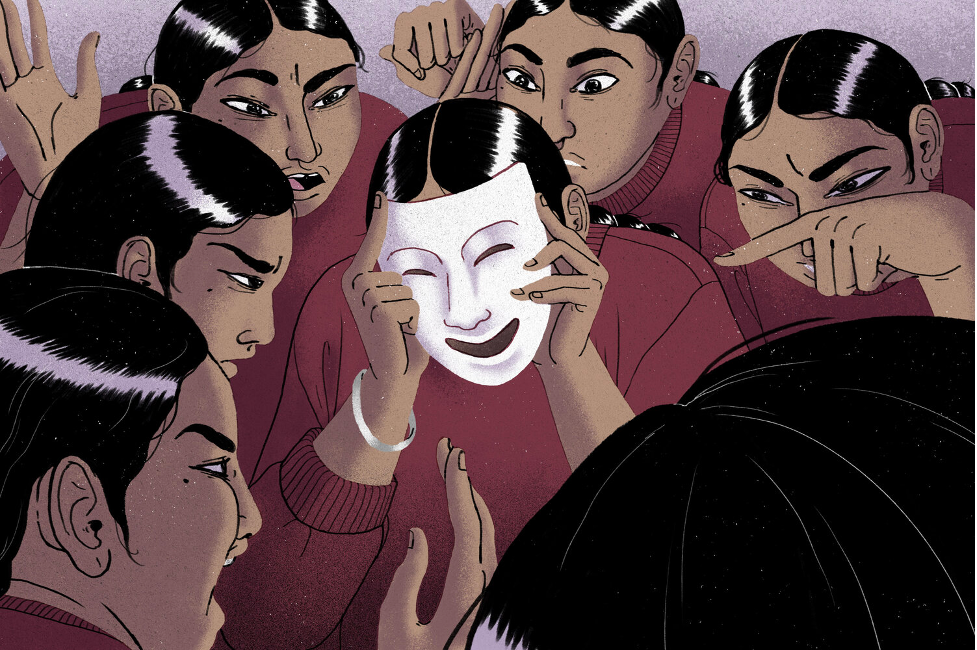 Image credit: Jasjyot Singh Hans for NPR
Image credit: Jasjyot Singh Hans for NPR
Attending the college of your dreams feels exciting. You worked so hard through all of K-12 to be afforded this opportunity. It often never truly crosses your mind the obstacles you should or would anticipate — almost like a case of tunnel vision whose consequences can only be seen later.
Such was my experience as an underprivileged student. I had not realized the stronghold that imposter syndrome would have on me during my first year of undergrad. Imposter syndrome can be described as consistent feelings of inadequacy in one’s perceived accomplishments and competency, a condition that most frequently impacts perfectionists pursuing higher education or career advancement.
Perfectionism can be seen as one of the tenets upholding imposter syndrome. When people downplay their accomplishments and become unable to engage in self-validation, it’s only natural that they try even harder to impress themselves and others through perfectionist tendencies. This perfectionism can even lead to procrastination, when the task at hand eventually seems too overwhelming or difficult to confront. In this regard, imposter syndrome can be a vicious cycle that actively hinders one’s progress in their education or work.
It was not until I started my internship with HOP that I realized just how much white supremacy plays a role in perpetuating imposter syndrome. By helping to develop the White Supremacy and Model Minority Myth modules of the Structural Competency Framework, I became more knowledgeable on how white supremacy culture is at play in perfectionism and, by extension, imposter syndrome.
White supremacy culture enables the existence of white supremacy, a harmful set of beliefs that paints white as being the superior race and the one deserving the most power, control, and resources. Perfectionism has been identified as a trait of white supremacy culture, a largely invisible manifestation of white supremacist beliefs in our day-to-day lives. So while I thought imposter syndrome resulted from a concoction of my own lived experiences and upbringing, I unknowingly was also justifying a violent cycle that most directly affects BIPOC folks by obscuring the existence of structural racism.
During my first year attending Yale University as a first-generation, low-income (FGLI) student, I often felt that I had many factors all working against me in different ways. Underrepresented ethnic identity? Check. Underrepresented religious affiliation? Check. Underrepresented socioeconomic background? Check. The compounding effects of structural racism and rampant socioeconomic equality essentially had me trapped in an unchecked cycle of imposter syndrome.
For other students like me who are also underprivileged, it can be so difficult to break out of the vicious cycle, in part due to the highly resilient white supremacy culture that has penetrated all aspects of our daily lives. Breaking free from imposter syndrome can be made yet more difficult if multiple intersecting identities pose additional barriers to success.
Higher education institutions have undoubtedly made strides to admit more diverse class bodies, but that’s often where it ends. Getting underprivileged students through the door is merely not enough to grant the students an equitable chance at success. Although college admissions are increasingly diversified, colleges fail to accommodate underprivileged students, whether through insufficient financial assistance or failure to address the structural barriers that threaten the success of BIPOC, low-income, and/or first-generation students.
Imposter syndrome is just one of the ways in which violence is committed against BIPOC communities, who already have structural factors working against them, making educational attainment and career advancement that much more difficult. Unfortunately, some underprivileged students don’t even know that imposter syndrome exists until they are sitting in their introductory general chemistry course afraid to answer a professor’s questions because they are not sufficiently confident in their ability to succeed in the class. Or they start feeling burnout and low self-esteem just weeks into the first semester of college.
Recognizing that imposter syndrome exists and finding ways to overcome it has been instrumental in helping myself. By sharing my feelings with my peers and giving myself patience and grace, I realized that not only am I not alone but also that being less harsh with myself generally boosts my self-image in such critical ways. Until higher education institutions provide more support for underprivileged students to navigate college and post-college life, the burden disproportionately falls on students themselves to cope with the existence of structural barriers and find the best techniques for tackling such problems and cultivating their own image of success. With that said, institutions need to stop letting white supremacy culture and other structural barriers win by ignoring the blatant flaws in the higher education system.
By Zaharaa Altwaij, Associate Project Manager – Intern, for HOP’s series of monthly staff blogs.
